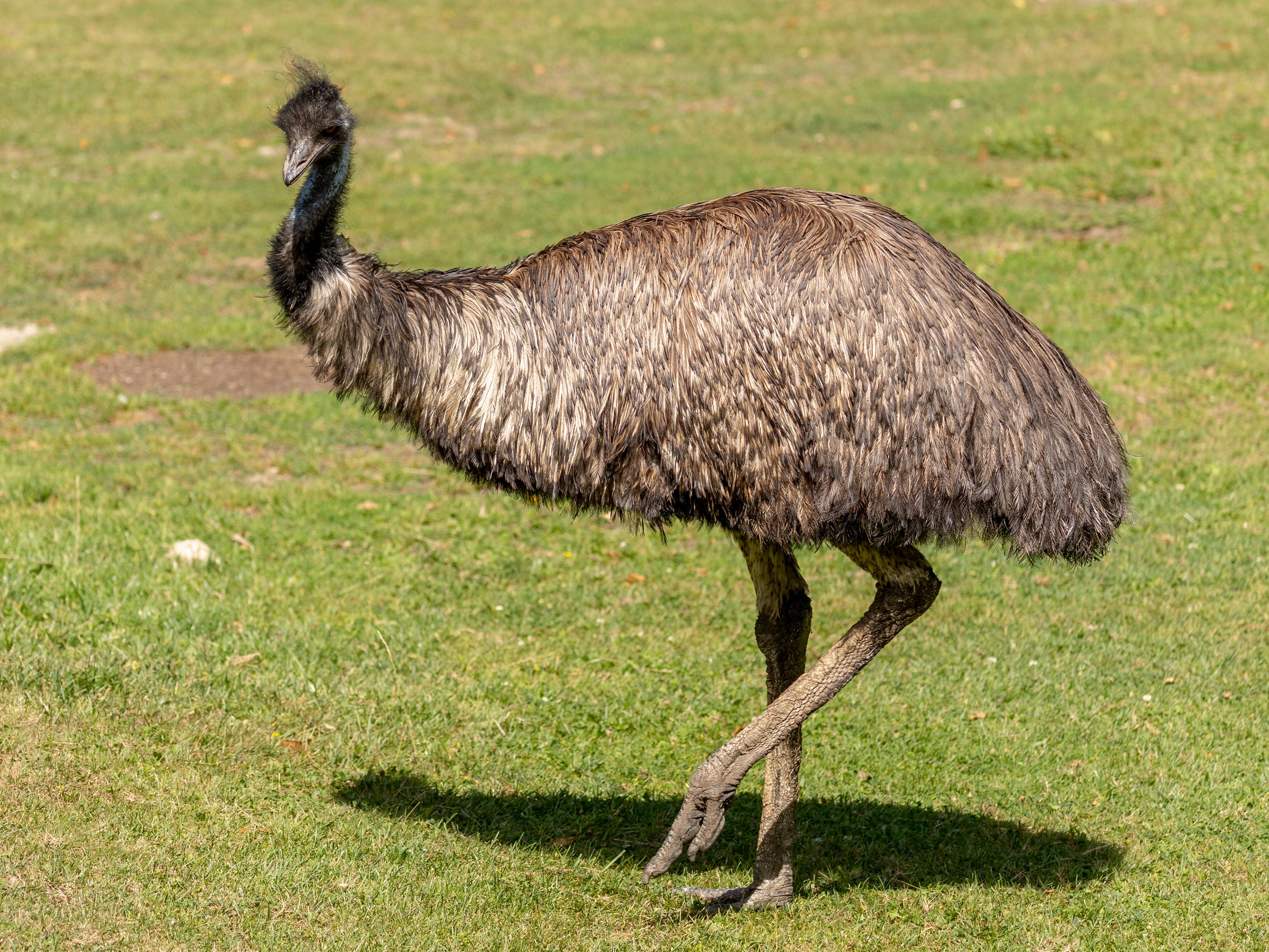
Station 16 Emus
A war against emus? It really existed in 1932 in Australia, because only there the emu can be found. Actually, emus are solitary animals or appear in pairs. But as they migrate a lot to find better feeding areas, they meet other emus with the same intention and the more animals meet, the migratory movement intensifies and it can already add up to a thousand animals. 20 000 birds are supposed to have been there in the said year, as the farmers were already afraid for their wheat harvest. Therefore, the government decided to reduce the number of animals by using the military with machine guns. This attempt failed, however, as the frightened animals scattered at a speed of 50 Km/h during the first gun bursts. It is not for nothing that emus belong to the running animals. Later, miles of fences were erected to protect agriculture. Emus lay about 7 dark green eggs which are then hatched only by the rooster, and then also cared for. The dark green eggs are 10x larger than chicken eggs and are usually laid in the snow in our country in January. Emus are not related to the African ostrich, but represent a separate order.
Station 16 Emu
Válka proti emu? Skutečně se to stalo v Austrálii v roce 1932, protože emu se vyskytuje pouze tam. Ve skutečnosti jsou emu samotářská zvířata, případně se vyskytují v párech. Protože však hodně migrují za lepšími potravními podmínkami, setkávají se s dalšími emu se stejným záměrem a čím více zvířat se setkává, tím více se migrace zvyšuje; někdy se může sejít i tisíc kusů. V uvedeném roce se prý těchto ptáků sešlo na 20 000 a zemědělci se již obávali o úrodu pšenice. Vláda se proto rozhodla použít armádu se samopaly, aby počet těchto ptáků snížila. Tento pokus se však nezdařil, protože vyděšená zvířata se při první salvě rozprchla rychlostí 50 km/h. Ne nadarmo patří emu mezi běhavé ptáky. Později byly na ochranu zemědělství postaveny kilometry dlouhé ploty. Emu snášejí asi 7 tmavě zelených vajec, která se líhnou a o která se stará pouze kohout. Tmavě zelená vejce jsou desetkrát větší než slepičí a obvykle jsou snesena v lednu do sněhu. Emu nejsou příbuzní africkým pštrosům, ale spadají do jiného řádu.
Station 16 Emus
A war against emus? It really existed in 1932 in Australia, because only there the emu can be found. Actually, emus are solitary animals or appear in pairs. But as they migrate a lot to find better feeding areas, they meet other emus with the same intention and the more animals meet, the migratory movement intensifies and it can already add up to a thousand animals. 20 000 birds are supposed to have been there in the said year, as the farmers were already afraid for their wheat harvest. Therefore, the government decided to reduce the number of animals by using the military with machine guns. This attempt failed, however, as the frightened animals scattered at a speed of 50 Km/h during the first gun bursts. It is not for nothing that emus belong to the running animals. Later, miles of fences were erected to protect agriculture. Emus lay about 7 dark green eggs which are then hatched only by the rooster, and then also cared for. The dark green eggs are 10x larger than chicken eggs and are usually laid in the snow in our country in January. Emus are not related to the African ostrich, but represent a separate order.